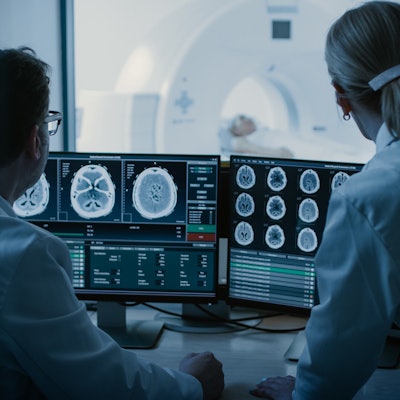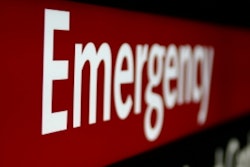
The costs involved in staffing an MRI service -- particularly for radiologic technologists -- made up the greatest expense involved in operating an MRI scanner, according to a total-cost-of-ownership analysis presented at this week's International Society for Magnetic Resonance in Medicine (ISMRM) meeting.
Analyzing the total cost of ownership (TCO) for imaging equipment can assist in identifying hidden costs when purchasing equipment, and it can help make overall imaging management-related strategic business decisions, according to an e-poster at ISMRM 2020 on research conducted by Dr. Elizabeth Jones of the U.S. National Institutes of Health.
Using a TCO model she developed, Jones found that the greatest expense in MRI operations involved human resources -- specifically radiologic technologists -- which accounted for 35% of TCO. On the other hand, the cost of purchasing an MRI system that's used for an average of 10 years accounted for only 17%.
Moreover, TCO models also could help in identifying areas for cost savings in an environment of decreasing reimbursement, Jones told AuntMinnie.com in an email. It could even give radiologists a greater role in the purchasing process.
Account for all resources
"Although intuitively it may seem the cost of the initial acquisition or the maintenance-service agreements would be the most important when considering equipment purchasing decisions, a complete analysis showed that in our setting, in a metropolitan area with a competitive job market for technologists, the costs of the MR technologists accounted for the largest proportion of the total costs," explained Jones.
Resources that can be attributed to support the technologists include recruitment costs, orientation, continuing education and ongoing training, various types of leave, on call and overtime if applicable, and cost for reasonable accommodation.
Equipment and software upgrades also are important to incorporate into the model.
"If they offer measurable improved efficiency, they can be incorporated into the TCO," Jones added in her email.
Soft factors
Jones noted that the most difficult variables to define and measure included nonmonetary valuation of image quality and employee satisfaction. They can be indirectly measured by assessing radiologist and provider satisfaction to determine quality and evaluating employee turnover to determine employee satisfaction.
"Highly reliable healthcare systems correlate with patient safety and clinical quality," she said.
The TCO model was developed to assess costs of MRI scanners over their ownership life, starting when funds are allocated for purchase through to the equipment's decommissioning in an organization, and covered outpatient, inpatient, and research settings. The model included acquisition and installation costs; site modifications to comply with safety requirements; human resources, including ancillary personnel; small equipment, supplies, and contrast agents; service contracts; IT requirements; overhead; and upgrades.
Informed management choices
The idea was to harness TCO as a tool to prioritize and support life cycle management of a suite of MRI scanners and compare variables that contribute to acquisition, operation, and human resource costs in order to make informed management choices.
One cost reduction strategy, for instance, might involve the use of centralized remote scanning, which could cut the number of highly skilled technologists required, according to Jones' e-poster. A remote scanning capability makes it possible to provide reasonable accommodations to staff with disabilities or vulnerabilities to COVID-19. Allowing employees to work remotely also would help imaging operators avoid the additional expense of hiring more full-time or contract staff.
The TCO analysis included an assessment of the impact of remote desktop software that enables control of scanner consoles by offsite technologists, said Jones in her poster. This approach changes the level and mix of skillsets among onsite staff, with a need for fewer highly skilled technologists. However, it increases the need for IT support and equipment costs to operate.
Radiologist role
Knowing the entire cost and value chain in imaging and techniques that business managers and hospital or practice leaders use to make decisions also may give radiologists an increased role in strategic decisions in their organization, Jones stated in her ISMRM e-poster.
In terms of follow-up research, Jones suggested measuring the reliability of the patient procedure and the reproducibility of imaging with a different staffing model and a limited number of technologist "superusers" performing scanning.
"CT and nuclear medicine molecular imaging modalities will be assessed next," Jones said.
Essentially, total cost of ownership is a useful tool for identifying hidden costs, comparing and implementing different management scenarios and strategies, and potentially decreasing costs.


.fFmgij6Hin.png?auto=compress%2Cformat&fit=crop&h=100&q=70&w=100)





.fFmgij6Hin.png?auto=compress%2Cformat&fit=crop&h=167&q=70&w=250)











